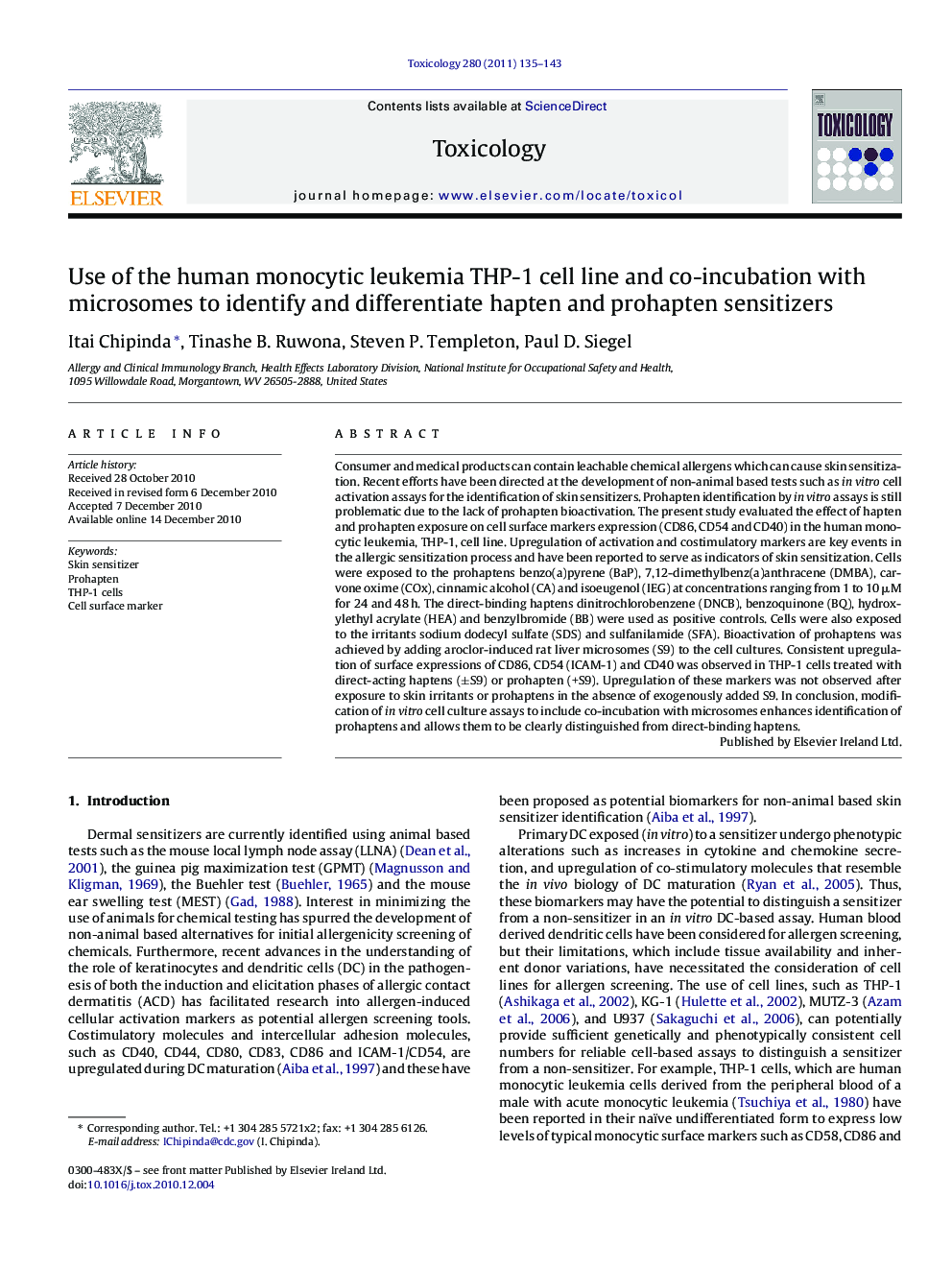| کد مقاله | کد نشریه | سال انتشار | مقاله انگلیسی | نسخه تمام متن |
|---|---|---|---|---|
| 2596270 | 1562377 | 2011 | 9 صفحه PDF | دانلود رایگان |

Consumer and medical products can contain leachable chemical allergens which can cause skin sensitization. Recent efforts have been directed at the development of non-animal based tests such as in vitro cell activation assays for the identification of skin sensitizers. Prohapten identification by in vitro assays is still problematic due to the lack of prohapten bioactivation. The present study evaluated the effect of hapten and prohapten exposure on cell surface markers expression (CD86, CD54 and CD40) in the human monocytic leukemia, THP-1, cell line. Upregulation of activation and costimulatory markers are key events in the allergic sensitization process and have been reported to serve as indicators of skin sensitization. Cells were exposed to the prohaptens benzo(a)pyrene (BaP), 7,12-dimethylbenz(a)anthracene (DMBA), carvone oxime (COx), cinnamic alcohol (CA) and isoeugenol (IEG) at concentrations ranging from 1 to 10 μM for 24 and 48 h. The direct-binding haptens dinitrochlorobenzene (DNCB), benzoquinone (BQ), hydroxylethyl acrylate (HEA) and benzylbromide (BB) were used as positive controls. Cells were also exposed to the irritants sodium dodecyl sulfate (SDS) and sulfanilamide (SFA). Bioactivation of prohaptens was achieved by adding aroclor-induced rat liver microsomes (S9) to the cell cultures. Consistent upregulation of surface expressions of CD86, CD54 (ICAM-1) and CD40 was observed in THP-1 cells treated with direct-acting haptens (±S9) or prohapten (+S9). Upregulation of these markers was not observed after exposure to skin irritants or prohaptens in the absence of exogenously added S9. In conclusion, modification of in vitro cell culture assays to include co-incubation with microsomes enhances identification of prohaptens and allows them to be clearly distinguished from direct-binding haptens.
Journal: Toxicology - Volume 280, Issue 3, 27 February 2011, Pages 135–143